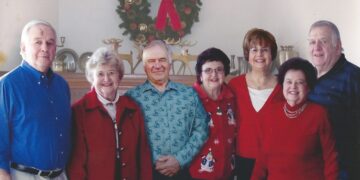
Before reading Sam, I had never read a novel by Goodman, though I have read her stories in The New Yorker, where she has published a dozen since 1991. Born in 1967 in Brooklyn, New York, Goodman today lives, with her husband and four children, in Cambridge, Massachusetts. Goodman grew up in Hawaii, where her parents pursued academic careers at the University of Hawaii. Goodman graduated from the Punahou School in Honolulu in 1985. She went on to Harvard where she met her husband David Karger. After earning B.A. degrees there, they entered graduate school at Stanford University where Goodman earned a Ph.D. in English Literature in 1996.
Like Lee Smith and Gail Godwin, Goodman always wanted to be a writer: she was seven when she wrote and illustrated her “first novel.” She published her first short story for adults in 1986 and has continued to write short stories, listing 22 published stories on her Web site. Her most recent appears in a February 2023 issue of The New Yorker. Her first book was a collection of short stories, Total Immersion (1998); that year, she also published her first novel, Kaaterskill Falls, a finalist for the National Book Award. Other publications followed: a second collection of short stories, The Family Markowitz (2005), and seven novels: Paradise Park (2001); Intuition (2006); The Other Side of he Island (2008); The Cookbook Collector (2010); The Chalk Artist (2017); and Sam (2023).
Sam opens with the title character at age seven; she lives with her hard-working, caring mother and younger half-brother. Her father, Mitchell, who comes to visit her in the first scene of the novel, is a talented man who “never found himself.” Whatever living he makes evolves from his “work” as a traveling magician, one-man band (He plays multiple instruments), and an on-demand poet. He obviously loves Sam, but is an absentee father, available only on his own terms. As a seven-old, Sam idolizes his magical qualities, in the first section of the novel, Goodman creates the language and syntax of the young girl, reminiscent of that ofJames Joyce’s novel, A Portrait of the Artist as a Young Man. As Sam matures, she comes to realize her father’s weaknesses; simultaneously, Goodman increases Sam’s vocabulary and elaborates her sentence structure.
Mitchell, Sam’s father, gives her one enduring gift: an interest in wall-climbing, a gift that helps focus her life until her mid-teens. As a teenager, Mitchell himself had enjoyed climbing boulders in Red Rocks, a public park in Gloucester, Massachusetts. Wall-climbing helps Sam form a strong friendship with Halle, also a climber, but when Halle’s higher social status enables her to leave public school for Andover Academy; their connection falters. Goodman clearly uses wall-climbing as a metaphor for Sam’s struggle to achieve a stronghold in her insecure life. Sam’s mother, Courtney, a hairdresser, has dreams for her daughter, but only limited enthusiasm for her daughter’s climbing.
. Mitchell’s lack of focus, drinking, and drug use lead him to “disappear” for nearly a year when Sam enters high school. Disappointed by her father’s absence, Sam becomes an outsider with little interest in school. When she is fifteen, she forms a school friendship with Corey, another “outsider,” but that one fails too because he wants sex along with friendship. The worst event of her teenage years occurs when she “falls in love” with one of her climbing instructors–five years older than she; he takes advantage of her adulation. Her father returns, but Sam
refuses to see him even after gives up his entertainment tours, gets a real job on a horse farm, and goes to AA. When she is about to graduate from high school, he dies of an overdose. Sam, feeling guilty and no longer climbing, struggles to graduate from high school. Urged on by her mother, he enters a community college, to study accounting, but, after taking a class in earth science, she develops a genuine interest in the natural world.
When she is in her late teens, he returns to rock climbing under the aegis of Justin and his friends whom she meets at Red Rock. She and Justin begin a relationship that also includes his great-grandmother who encourages her interest in the science. When the novel ends, Sam’s relationship with Justin continues but, urged on by teachers at the community college, Sam enters the University of Massachusetts, Amherst, to study geology.. Reviewing the novel in The New York Times, Mary Pols correctly asserts that, in Sam, “Allegra Goodman delivers a portrait of a girl at risk that shimmers with an unusual intimacy and depth.” The same description can apply to Demon Copperhead. Both Demon Copperhead and Sam introduce well-developed and appealing characters who face troubling issues, issues that many young people face today..


































